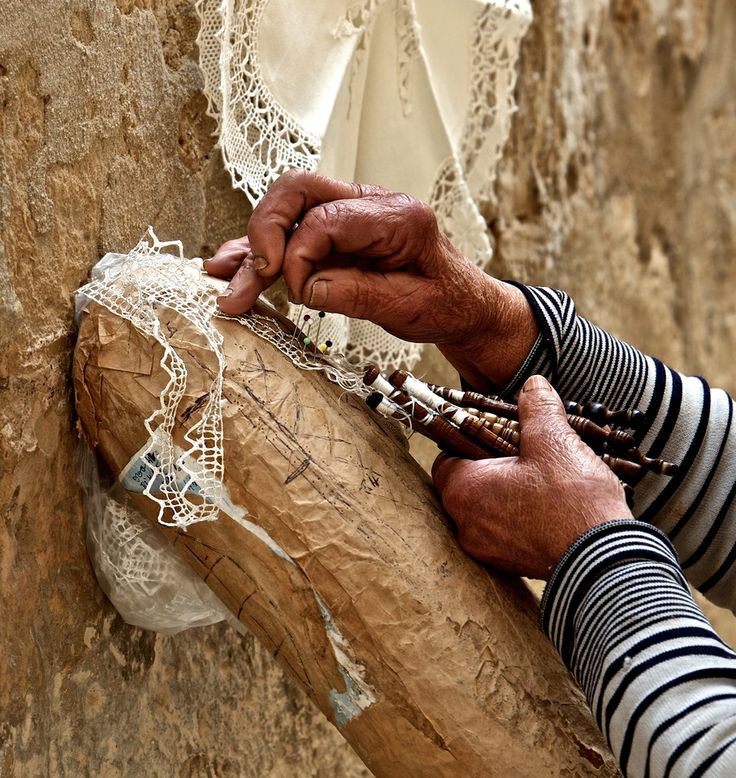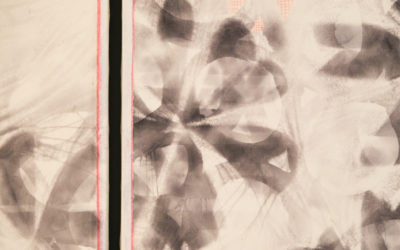Until recently, it was quite common in Malta to observe women making bizzilla (lace) on a ‘trajbu’ (a hard cylinder-like pillow made of straw and covered with brown paper) with ‘ċombini’ (bobbins), on the doorstep of their house.
Lace has been used in the Maltese Islands since the time of the Knights. One of the very first visual records of lace in Malta can be seen at the beautiful tomb of the French Cardinal and Grand Master Hugues Loubenx de Verdalle (Grand Master of the Order of Malta between 1582 and 1595), located in the crypt of St John’s Co-Cathedral; the lace can be seen on the edge of the Grand Master’s ecclesiastical robe. Whether the original lace was made in Malta or in France remains unknown.
Lady Hamilton Chichester gave to the Ciglia family in 1833, on a lace making competition in Malta, a Greek pattern with which they started to make white and black guipures (a heavy lace consisting of embroidered motifs bound together by large connecting stitches). This eventually became known as “Maltese Lace”.

The “Maltese lace” has usually the following characteristics:
- It is made from cream silk; black silk was also used in the past and, occasionally, linen thread.
- The 8 pointed Maltese cross is often part of the pattern, worked in whole or cloth stitch.
- The pattern may also have closely worked leaves known as “wheat ears” or “oats”. These are plump and rounded in shape, rather than the long narrow leaves of other types of bobbin lace.
Lace themes and structures are visible in many aspects of current art and design. Artists and designers are choosing to work with lace to use the evocative and suggestive nature of the material to transform, manipulate and demonstrate lace in new ways. Art practitioners are using themes that incorporate ideas around gender including domesticity, sexuality and erotica, whilst designers are reinterpreting intricate structures of lace exploring and subverting materials that challenge the traditional construction of lace. Many contemporary fiber artists are applying bobbin and needle lacemaking techniques to a multitude of fibers and filaments in unlimited colors and textures to interpret their world.



